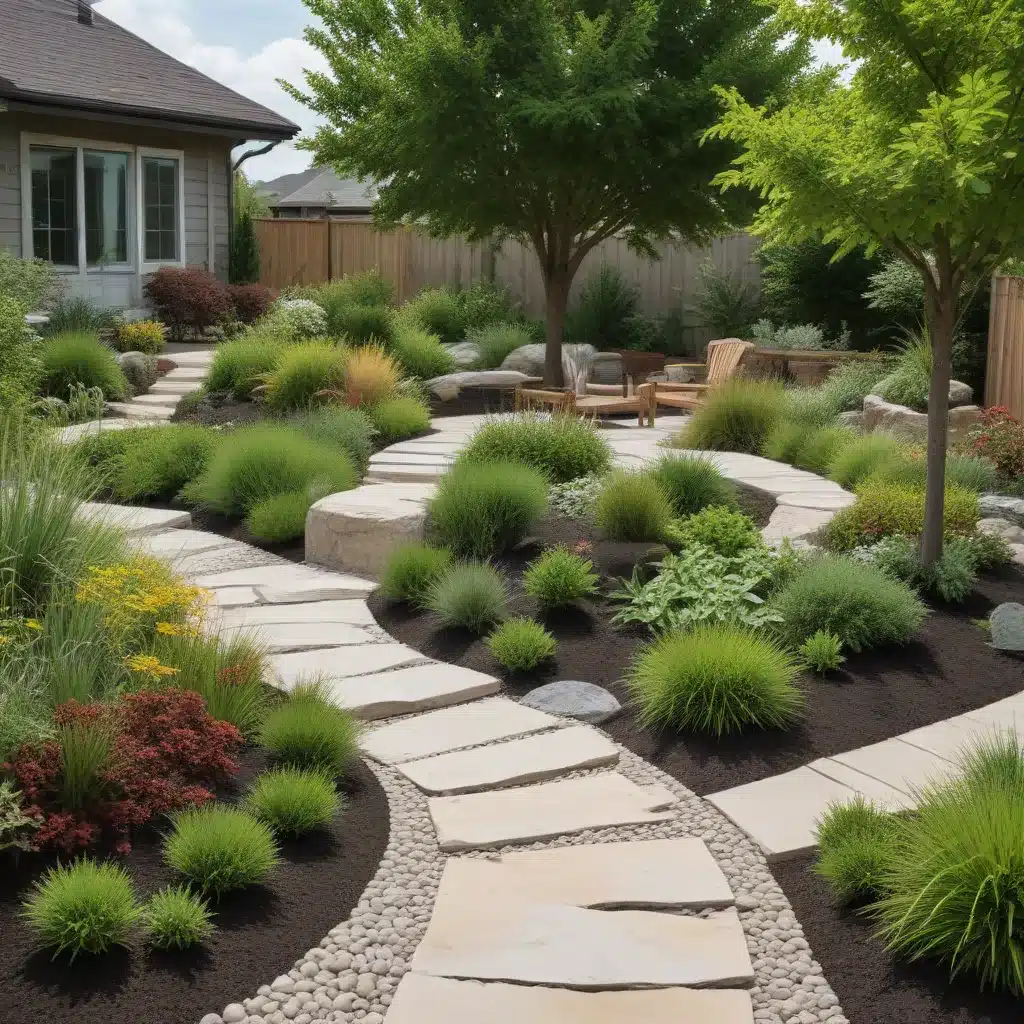
Enhancing Everyday Experiences: Landscape Design that Improves Quality of Life
Landscape design is a multifaceted discipline that extends far beyond mere aesthetics. As TriCounty Tree Care professionals, we recognize the profound impact that thoughtfully crafted outdoor environments can have on the overall quality of life. By strategically incorporating fundamental elements such as spatial planning, vegetation, water features, and hardscapes, we can create landscapes that stimulate the senses, elevate emotional well-being, and promote functionality for diverse users.
Fundamental Elements of Landscape Design
Spatial Planning and Layout: The thoughtful arrangement of spaces, pathways, and gathering areas is crucial in landscape design. Carefully considering the flow of movement, sight lines, and scale can foster a sense of exploration, discovery, and serenity. Strategically positioned focal points, transitions, and circulation patterns can enhance the experiential quality of the landscape.
Vegetation and Greenery: The selection and placement of trees, shrubs, perennials, and groundcovers can have a profound impact on the sensory experience of a landscape. Diverse plant palettes can stimulate the senses through color, texture, fragrance, and sound (e.g., rustling leaves). Incorporating native species not only contributes to ecological balance but can also evoke a stronger sense of place and connection to the local environment.
Water Features and Hydrology: The presence of water, whether in the form of fountains, ponds, streams, or waterfalls, can enhance the overall ambiance of a landscape. The soothing sounds and visual qualities of water features can induce a sense of tranquility and relaxation, while also serving functional purposes such as stormwater management and habitat creation.
Hardscape and Materials: The selection and arrangement of paving, walls, seating, and other hardscape elements can significantly influence the aesthetic, functional, and experiential aspects of a landscape. Thoughtful use of natural materials (e.g., stone, wood) and textural variations can create a sense of harmony and connection to the environment.
Enhancing Everyday Experiences
Sensory Stimulation: Well-designed landscapes should engage multiple senses, creating a multi-dimensional experience for users. Vibrant colors, fragrant plants, textural variations, and the soothing sounds of water can evoke emotional responses and heighten one’s awareness of the surrounding environment.
Emotional and Psychological Impact: Landscapes can have a profound influence on our emotional and psychological well-being. Restorative gardens, for example, can provide a calming and therapeutic setting for individuals recovering from illness or dealing with stress. Exposure to nature has been shown to reduce anxiety, depression, and mental fatigue, while fostering a sense of tranquility and connection.
Functionality and Accessibility: Landscape design should prioritize functionality and accessibility to ensure that the outdoor environment is inclusive and accommodating for users of all ages and abilities. Thoughtful placement of seating, shaded areas, and accessible pathways can encourage physical activity, social interaction, and overall engagement with the landscape.
Sustainable Landscape Practices
Environmental Considerations: Sustainable landscape design prioritizes environmental stewardship and resource conservation. Strategies such as water-efficient irrigation, native plant selection, and the incorporation of renewable materials can minimize the ecological footprint of a landscape while enhancing its long-term resilience.
Energy Efficiency: Carefully positioned trees and shading elements can help reduce energy consumption for nearby buildings, lowering the carbon footprint and operational costs associated with heating and cooling. Landscapes that promote passive cooling and microclimate regulation contribute to more energy-efficient built environments.
Ecological Restoration: Landscape design can play a crucial role in restoring natural habitats and supporting biodiversity. The strategic inclusion of native species, pollinator-friendly plants, and wildlife-friendly features (e.g., bird baths, insect hotels) can enhance the ecological value of a landscape, benefiting local ecosystems and fostering a deeper connection to nature.
Health and Wellbeing Benefits
Physical Activity and Recreation: Landscapes that incorporate walking trails, play areas, and recreational amenities can encourage physical activity and outdoor recreation, promoting improved cardiovascular health, muscle strength, and overall fitness.
Stress Reduction and Relaxation: Exposure to natural settings has been shown to elicit physiological responses that counteract the effects of stress, such as reduced blood pressure, heart rate, and muscle tension. Landscapes that offer quiet contemplation, sensory engagement, and opportunities for mindfulness can foster a sense of restoration and rejuvenation.
Mental Health Improvements: Numerous studies have demonstrated the positive impact of nature exposure on mental health. Landscapes that provide restorative environments can contribute to reduced symptoms of depression, anxiety, and cognitive fatigue, while enhancing mood, attention, and overall psychological well-being.
Community-Focused Landscape Design
Public Spaces and Placemaking: Well-designed public landscapes can serve as community hubs, fostering social interaction, cultural exchange, and a sense of belonging. Thoughtfully planned parks, plazas, and streetscapes can create vibrant public realms that enhance the livability and appeal of a neighborhood or district.
Social Interaction and Engagement: Landscapes that offer diverse seating options, shaded gathering areas, and recreational amenities can encourage social interaction and community engagement. Such spaces can facilitate spontaneous encounters, group activities, and intergenerational connections, strengthening the social fabric of a community.
Cultural and Historical Narratives: Landscape design can also serve as a canvas for cultural expression and the celebration of local history. The incorporation of artistic elements, interpretive signage, and references to the site’s heritage can create meaningful connections between people and the built environment, fostering a deeper sense of place and community identity**.
By thoughtfully integrating these fundamental elements, sustainable practices, and community-focused considerations, landscape design can enhance the everyday experiences of individuals and communities, improving overall quality of life. As TriCounty Tree Care professionals, we are committed to creating landscapes that stimulate the senses, nurture emotional and psychological well-being, and promote sustainable, inclusive, and vibrant public realms. Let us collaborate with you to design landscapes that enrich your everyday life.


